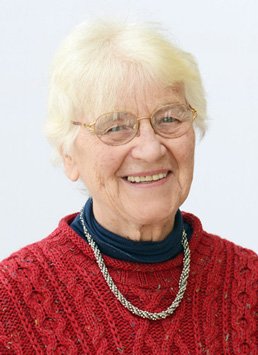Society for the Study of Women Philosophers, Inc.
a non-profit, tax-exempt educational charity 501(c)3 Internal Revenue Code
Elizabeth Cabot Cary Agassiz
1822-1907
Feminism, Philosophy of Science
|
Kate Lindemann's Women Philosophers pages |
 |
Remember!! Your purchase of books by clicking on Abe Books or Amazon links through this site earns us a small commission that is used to provide travel scholarships. |
Elizabeth Cabot Cary Agassiz came from Massachusetts society and used her knowledge and her social connections to advance the cause of women's education. She was one of the first women to be elected to the American Philosophical Society, America's first learned society.
Chronology
1822 She born in Boston, Massachusetts on December 5 to Mary Ann Cushing Perkins Cary and her husband Thomas Graves Carey, who was a Boston businessman. She had delicate health and was educated at home. At the proper age, she entered Boston Society.
After the marriage of her older sister to a Harvard professor, she joined a group of Cambridge intellectuals. It was here that the met Louis Agassiz, who was a prominent Swiss scientist teaching at Harvard. Louis was a widower with three children.
1850 Her name became Elizabeth Cabot Carey Agassiz in this year when she married Louis. It was she who organized the household, took care of the finances and mothered his children from his first marriage. She also worked closely with her husband in his scientific studies. It was a collaborative arrangement.
1856 Elizabeth Cabot Cary Agassiz established a School for girls of Boston in her home on Quincy Street in Cambridge. Her husband helped. He gave lectures as did a number of other Harvard professors. The school remained open for 7 years, closing in 1863.
1865 - 1866 She helped organize and manage the Thayer expedition to Brazil with her husband and both of them were out of the country for most of the American Civil War. (William James, later to become a well known philosopher, was one of the student interns on the Thayer voyage.)
1867 Elizabeth Cabot Cary Agassiz began corresponding with Arnold Guyot, a well known geologist and meteorologist who had emigrated to the United States. Much of this correspondence is in the American Philosophical Society collection.
1869 On October 15, 1869 Elizabeth Cabot Carey Agassiz was elected a member of the American Philosophical Society. At this same meeting Mary Fairfax Somerville and Maria Mitchell were also elected.
1871 - 1872 She helped organize and manage the Hassler Expedition, which was the first important US governement marine exploration. Her husband Louis Agassiz, Dr. Franz Steindacher, Dr. Thomas Hill, Count L. F. de Pourtales and other scientists were all on board the ship. They left Boston in December, traveled to St. Thomas, along the coast of Brazil and through the Straits of Magellan. Much of their collected specimens were given to the Museum of Comparative Zoology at Harvard, which Louis Agassiz had founded. Elizabeth's notes are the only extant explanations of Louis Agassiz's later theories of glaciation.
1872 Her husband, Louis, dies.
1879 Elizabeth and several other women had been advocating that Harvard open its doors to women. Finally in this year, the Harvard Annex was founded.
1882 She was involved in establishing the Society for the Collegiate Instruction of Women. She served as president of the Society for 12 years until it became Radcliffe College in 1894
1894 -1903 She served as the first president of Radcliffe College.
1907 Elizabeth Cabot Cary Agassiz died in Arlingon, Massachusetts on June 27.
It should be noted that Elizabeth was a Unitarian and is listed among the Unitarian notable women.
Works
1859 First Lesson in Natural History
1865 Seaside Studies coauthored with her stepson Alexander
1868 A Journey in Brazil coauthored with her husband
1885 Biography of Louis Agassiz This work is available through Project Gutenberg at Louis Agassiz
Her papers, including her correspondence with George Sand, are at Radcliffe College
Society for the Study of Women Philosophers